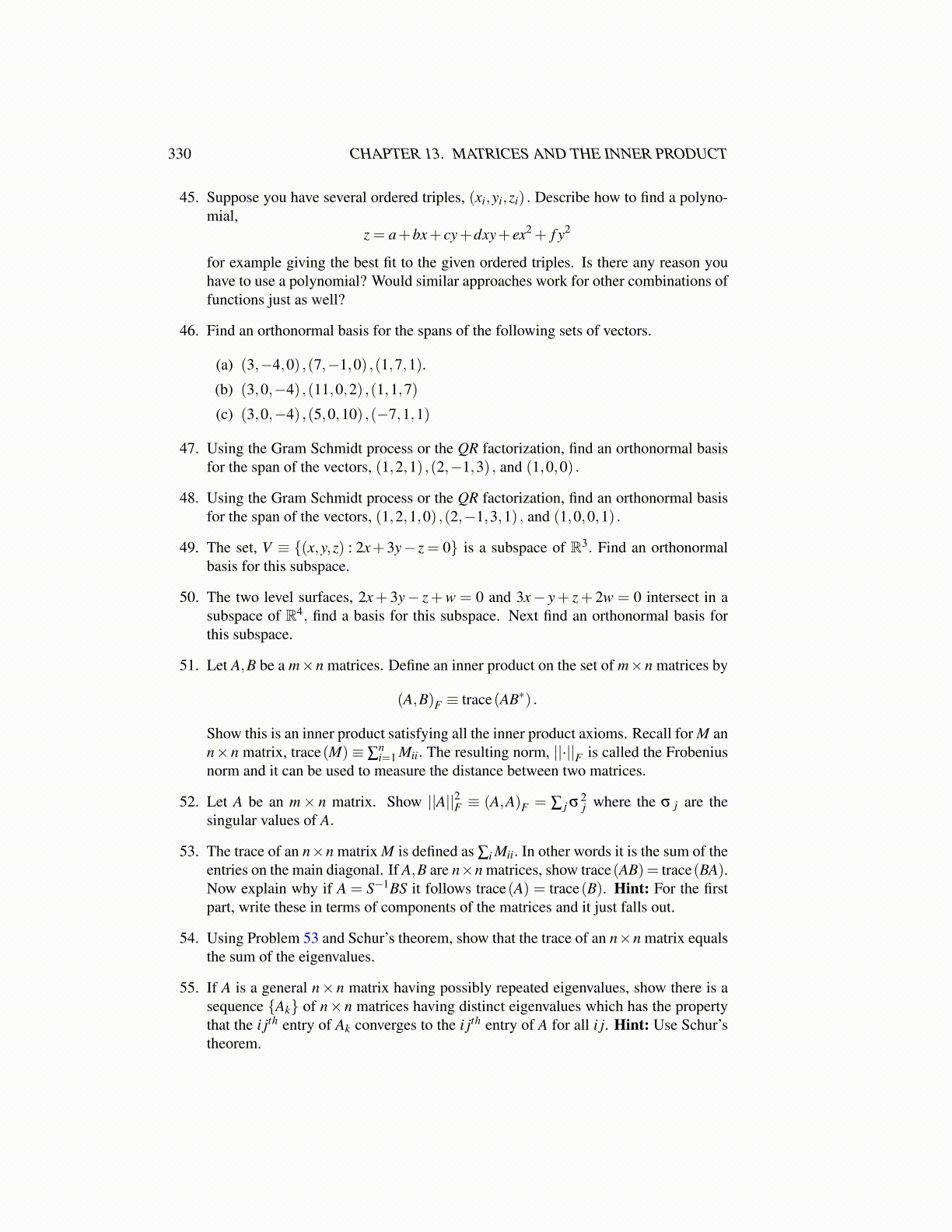
330 CHAPTER 13. MATRICES AND THE INNER PRODUCT
45. Suppose you have several ordered triples, (xi,yi,zi) . Describe how to find a polyno-mial,
z = a+bx+ cy+dxy+ ex2 + f y2
for example giving the best fit to the given ordered triples. Is there any reason youhave to use a polynomial? Would similar approaches work for other combinations offunctions just as well?
46. Find an orthonormal basis for the spans of the following sets of vectors.
(a) (3,−4,0) ,(7,−1,0) ,(1,7,1).
(b) (3,0,−4) ,(11,0,2) ,(1,1,7)
(c) (3,0,−4) ,(5,0,10) ,(−7,1,1)
47. Using the Gram Schmidt process or the QR factorization, find an orthonormal basisfor the span of the vectors, (1,2,1) ,(2,−1,3) , and (1,0,0) .
48. Using the Gram Schmidt process or the QR factorization, find an orthonormal basisfor the span of the vectors, (1,2,1,0) ,(2,−1,3,1) , and (1,0,0,1) .
49. The set, V ≡ {(x,y,z) : 2x+3y− z = 0} is a subspace of R3. Find an orthonormalbasis for this subspace.
50. The two level surfaces, 2x+ 3y− z+w = 0 and 3x− y+ z+ 2w = 0 intersect in asubspace of R4, find a basis for this subspace. Next find an orthonormal basis forthis subspace.
51. Let A,B be a m×n matrices. Define an inner product on the set of m×n matrices by
(A,B)F ≡ trace(AB∗) .
Show this is an inner product satisfying all the inner product axioms. Recall for M ann×n matrix, trace(M)≡ ∑
ni=1 Mii. The resulting norm, ||·||F is called the Frobenius
norm and it can be used to measure the distance between two matrices.
52. Let A be an m× n matrix. Show ||A||2F ≡ (A,A)F = ∑ j σ2j where the σ j are the
singular values of A.
53. The trace of an n×n matrix M is defined as ∑i Mii. In other words it is the sum of theentries on the main diagonal. If A,B are n×n matrices, show trace(AB) = trace(BA).Now explain why if A = S−1BS it follows trace(A) = trace(B). Hint: For the firstpart, write these in terms of components of the matrices and it just falls out.
54. Using Problem 53 and Schur’s theorem, show that the trace of an n×n matrix equalsthe sum of the eigenvalues.
55. If A is a general n× n matrix having possibly repeated eigenvalues, show there is asequence {Ak} of n×n matrices having distinct eigenvalues which has the propertythat the i jth entry of Ak converges to the i jth entry of A for all i j. Hint: Use Schur’stheorem.